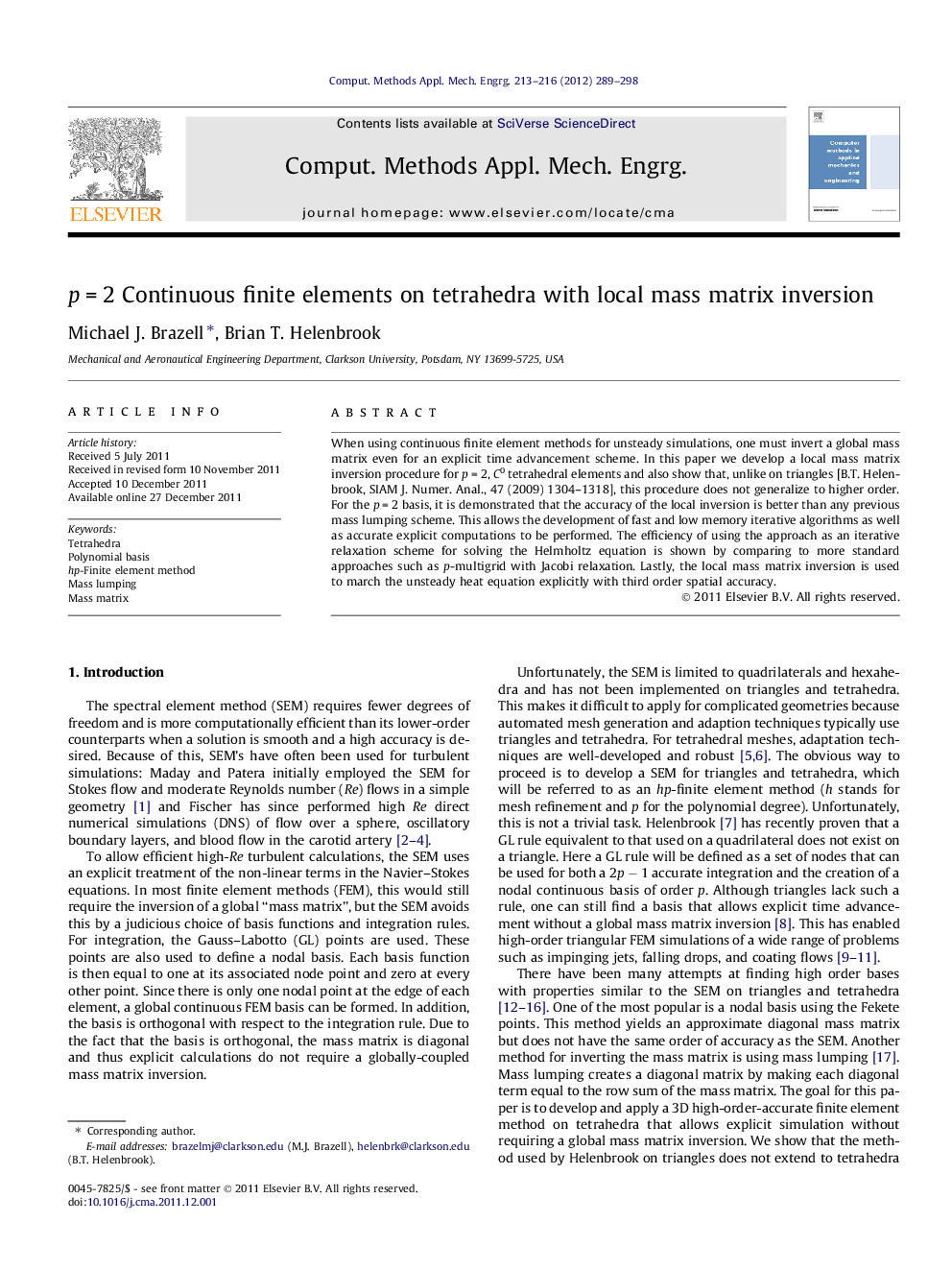| Article ID | Journal | Published Year | Pages | File Type |
|---|---|---|---|---|
| 6918879 | Computer Methods in Applied Mechanics and Engineering | 2012 | 10 Pages |
Abstract
When using continuous finite element methods for unsteady simulations, one must invert a global mass matrix even for an explicit time advancement scheme. In this paper we develop a local mass matrix inversion procedure for p = 2, C0 tetrahedral elements and also show that, unlike on triangles [B.T. Helenbrook, SIAM J. Numer. Anal., 47 (2009) 1304-1318], this procedure does not generalize to higher order. For the p = 2 basis, it is demonstrated that the accuracy of the local inversion is better than any previous mass lumping scheme. This allows the development of fast and low memory iterative algorithms as well as accurate explicit computations to be performed. The efficiency of using the approach as an iterative relaxation scheme for solving the Helmholtz equation is shown by comparing to more standard approaches such as p-multigrid with Jacobi relaxation. Lastly, the local mass matrix inversion is used to march the unsteady heat equation explicitly with third order spatial accuracy.
Related Topics
Physical Sciences and Engineering
Computer Science
Computer Science Applications
Authors
Michael J. Brazell, Brian T. Helenbrook,
